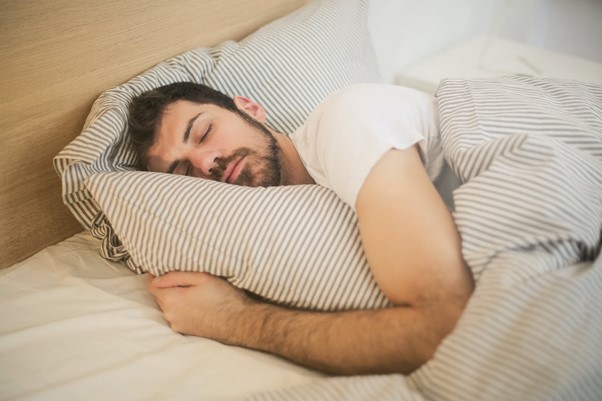Though traditionally sleeping on one’s back has been recommended, many people still maintain side sleeping as their preferred position. Research has shown that how you sleep impacts your sleep quality and overall health, so even side sleepers have to get their posture right every night for optimal comfort and wellness. Consider accessorizing for additional support to improve the quality of your night’s rest.
If you are a side sleeper, incorporating some simple comfort principles can elevate your slumber experience.
Get a Great Mattress
As with most sleeping positions, a supportive mattress can make all the difference. Not all mattresses are designed for side-sleeping requirements. The wrong design could expose you to shoulder pain and other issues that compromise your sleep quality and linger long after you wake up. Consider investing in a quality mattress to improve sleep and posture.
To start getting a great night’s sleep, research the best mattress in 2021 for side sleepers. Keep these tips in mind to select the right solution:
- A mattress that’s too soft won’t provide sufficient joint protection. Even if it initially feels comfortable on your shoulders and knees, the mattress may eventually let your body joints sink deeper into it, causing discomfort in sleep.
- A mattress that’s too firm isn’t the ideal solution either. It’ll be hard on your body and won’t provide the support you need to avoid pain throughout the night.
- As you try out your options, pay special attention to a mattress that’s neither too soft nor too firm. Many side-sleepers enjoy the joint and shoulder support a medium-firmness solution provides all night.

Determine the Best Side Position
Though side sleepers are categorized under the same umbrella, there are various side sleeping positions. The main postures are sleeping on the right or left, and both have multiple style variations, like the fetal position.
It’s generally recommended to sleep starting on your left side with both hands relaxed at the side. Additionally, keeping the knees shifted toward the chest is a well-known technique to relieve back pain. You can try it out and see how your body feels before exploring the other side-sleeping postures.
There’s nothing wrong per se with sleeping on the right, but experts recommend left side-sleeping for the general health improvements it can bring. The position tends to accelerate body toxins removal during sleep, for example.
You don’t have to sleep on one side every night, though. Switching between left and right can help prevent muscle discomforts from exerting too much pressure on one side of the body. Either posture is ideal for relieving lower back pain and avoiding sleep apnea.
Whether you choose left or right, remember supporting your spine’s natural curves is your main objective. It’s key to avoiding common sleep discomforts.
Elevate Your Head
You may apply this tip to most sleeping positions. Remember that it may take more than just sleeping on either side of your body to make the most of your slumber. Specific parts like your head or neck may require extra cushioning to avoid common sleep problems. Elevating your head with proper pillow support can help relieve headaches, neck strains, and sinus issues.
If you experience acid reflux when sleeping, consider this technique (along with side sleeping) to alleviate the issue. Studies suggest that the position can help prevent acid from flowing back into the esophagus when you’re lying in bed with your head or torso lifted.
Be sure to select a pillow that isn’t too hard on your neck while elevating your head. A medium-firmness solution that fits into your neck’s natural curve would be ideal for neck and head support.
If lying on one pillow doesn’t provide the support you require, try two instead.
Add a Leg Pillow
While sleeping on your side, your knees may lie on top of each other and cause pressure or sore areas. Try adding a pillow between your legs to reduce back and muscle strain. The additional cushioning promotes hip, pelvis, and spinal alignment.
Make sure the pillow is just firm enough to provide support all night. If you use a softer pillow that gradually shrinks under your upper knee’s weight, you may not get maximum benefits from side sleeping.
Side Sleeping for Optimal Health
There’s sufficient proof that side sleeping is beneficial in several health areas. However, its benefits don’t come automatically—you’ll need to incorporate some helpful strategies to get the most out of your slumber. That entails identifying your best side-sleeping position and investing in a supportive mattress and accessories for optimal support.



0 Comments